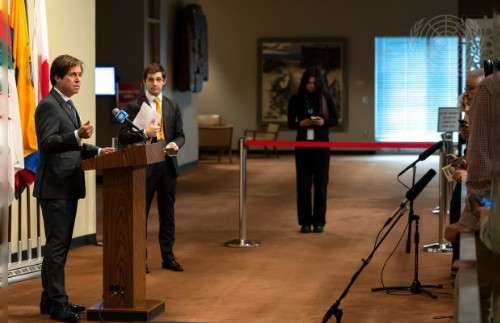
It took 10 years for the Cat Linh-Ha Dong metro line in Hanoi, Vietnam’s first, to enter service November 21.
Despite initial positive reviews, though, the value of the controversial project is being questioned.
The 13-kilometer elevated, 12-station line starts at Cat Linh railway station in north-central Hanoi and ends at Yen Nghia bus station and Phu Long depot in the southwestern suburbs of Ha Dong. Traveling at up to 80 kilometers per hour, the trip takes about 24 minutes, and the line will ultimately be able to carry 1 million passengers a day.
The line is expected to ease traffic congestion and reduce private vehicle use in Hanoi.
Citizens in Vietnam’s capital give positive reviews of the quality of the service and pin high hopes on the metro line.
A Hanoi office worker who asked that her name not be used said that although she cannot use the new line to get to work, she hopes it will help reduce traffic jams, shortening commute times and reducing stress and travel pressures.
“Moreover, since I care about the environment, people’s use of public transport will make a significant contribution to reducing dust and noise pollution,” she told VOA.
However, in contrast to the crowded scenes during the two-week free trial of the service, Vietnamese media last month reported on the lack of passengers.
According to reports from the first days of ticket sales, the number of passengers was low, at approximately 12,000 per day, equivalent to 60 people per trip, accounting for only 8% of the capacity.
This should worry the Hanoi city government, which oversees the project, especially as the metro line has been controversial, having experienced many years of delays and cost overruns.
In 2008, the project had a total initial investment of $552.8 million. By 2017, the figure increased to about $868 million, using exchange rates then in effect.
“After more than 10 years of construction, exceeding four times the expected time, and a cost overrun of 9 trillion dong, leaders of the transport industry have so many times promised to put it into operation, but then the promises are broken, causing people to be angry and skeptical. The people and public opinion have reasons for being angry and skeptical, since there were broken promises and cost overruns,” said Nguyen Van Thanh, a retiree in Ha Dong.
Dieu Anh, who works in public relations at a Hanoi real estate company, also told VOA that the people of Hanoi used to have high expectations for the Cat Linh-Ha Dong route, but after so many missed deadlines, the people were disillusioned.
“It was not until the metro line operated that I dared to believe that it had finally happened,” she said.
The delays and cost overruns are attributed to Vietnam’s inexperience in such projects, given that this is just the second urban railway in Vietnam after the Nhon-Hanoi line, which is still under construction.
South China Sea disputes between Vietnam and China, a major funder of the project, also contributed to the difficulties, since the deployment of a Chinese oil rig on Vietnam’s continental shelf in 2014 was said to have delayed the project’s implementation.
As a result, when the metro line entered service, Vietnamese social media critics referred to the “Chinese factor” and called for “boycotting China’s project.”
“Our forefathers taught us that once you lose faith, you lose faith 10,000 times,” Thanh told VOA. “I don’t believe in doing business with China and I’m not satisfied with their sluggish attitude,” he said.
“If I could choose again, I would not choose Chinese contractors. Instead, I would choose Japan and Cuba for public transport projects because there has been evidence that these countries have done good quality work in all aspects.”
Not everyone agrees with the boycott calls. The office worker said boycott calls are emotional, one-sided, and unnecessary.
“What people should do use this route because of its value in life. … Funding or delays are not related to the use of this route,” she told VOA.
However, she said she still believed that Japanese contractors would be a better choice for future projects.
“China has valuable experience in the construction of public transport facilities, especially electric trains. However, if selected, I hope that the next works will be constructed by Japanese contractors. Japan is a country with a lot of experience in building public transport systems and also very interested in environment protection,” she added.
VOA NEWS

















